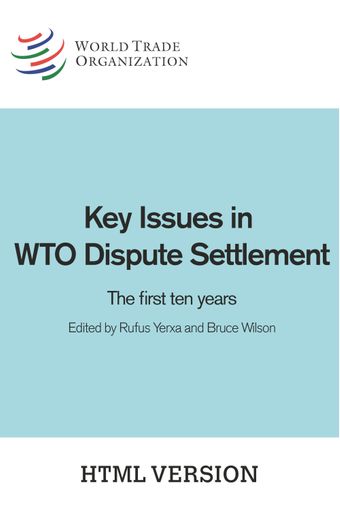The making of the ‘World Trade Court’: The origins and development of the Appellate Body of the World Trade Organization

- By: Peter Van Den Bossche
- Source: Key Issues in WTO Dispute Settlement , pp 9-9
- Publication Date: January 2005
- DOI: https://doi.org/10.30875/0b107769-en
- Language: English
The Appellate Body of the World Trade Organization (WTO) heard and decided its first appeals case in 1996. By 1 January 2005, the Appellate Body had heard and decided 64 appeals from WTO panel reports. The body of case law generated by the Appellate Body over the past nine years is, both in quantitative and qualitative terms, impressive. The Appellate Body’s case law is highly authoritative and has made a significant contribution to the development of international trade law. The decisions of the Appellate Body in, for example, US – Shrimp and EC – Asbestos, have effectively put an end to complex and sensitive disputes between WTO Members. Both panels and parties in WTO disputes have shown, and continue to show, much deference to the case law of the Appellate Body. The Appellate Body is undisputedly the most important organ of WTO dispute settlement. The Appellate Body is, all but in name, the ‘World Trade Court’. The key question addressed in this article is: what explains the prominent status, which the Appellate Body and its case law have achieved since 1996? Was the ‘success’ of the Appellate Body and its emergence as the World Trade Court ‘predetermined’ by its constituent instruments or is it primarily the result of other factors that have affected the Appellate Body and its case law in the past nine years?
-
From This Site
/content/books/9789287046642s007-c009dcterms_subject,pub_countryId-contentType:WorkingPaperSeries -contentType:Periodical -contentType:BookSeries -contentType:ReportSeries105


